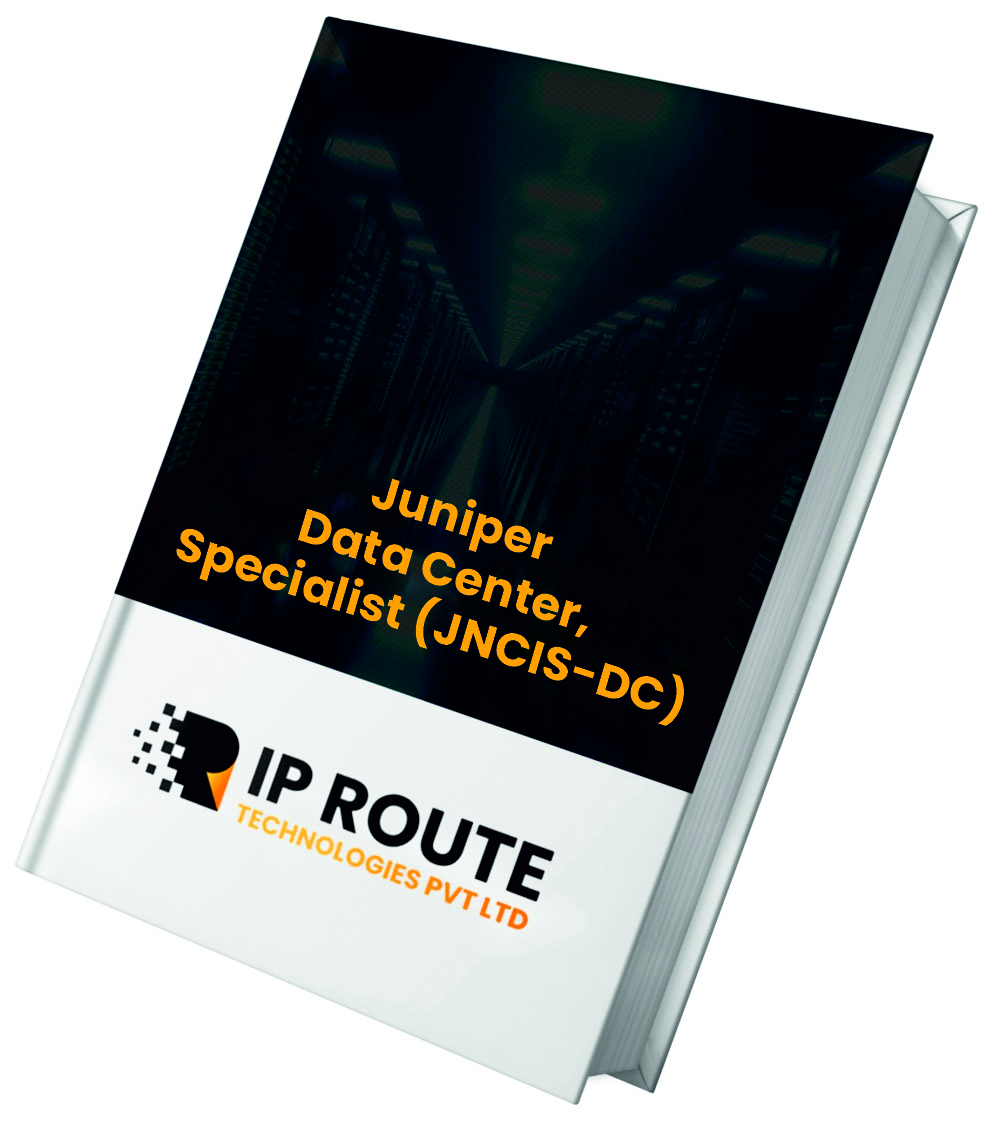Description
Course Summary
JNCIS-DC-TOPICS
Here’s a high-level view of the skillset required to successfully complete the JNCIS-DC certification exam.
- Describe the concepts, operation, or functionality of an IP fabric
- Spine-Leaf topology design
- ECMP load balancing
- Underlay and Overlay routing strategies
- Juniper Networks best practices
- Identify the concepts, operation, or functionality of EVPN
- EVI
- Bridge domain
- Ethernet segments
- Route distinguisher
- Route target versus vrf-import and vrf-export policies
- EVPN route types
- ERB using Type 2 or Type 5
- Identify the concepts, operation, or functionality of VXLAN
- Control plane options
- VNI-to-VLAN mapping
- VTEP functions
- Identify concepts and general features of Juniper Apstra
- Apstra Server
- Apstra device agents
- Apstra UI
- RBAC (role-based access-control)
- Event log
- Syslog
- Identify the concepts, operation, or functionality of components in the Apstra design phase
- DC Reference Design
- Interface maps
- Device profiles (e.g., interface naming and speeds)
- Resources
- Tags
- Logical devices
- Rack types
- Planning total spine capacity
- Templates
- Describe how to configure, monitor, or troubleshoot the various components in the Apstra design phase
- Identify the concepts, operation, or functionality of components in the Apstra build and deploy phases
- Fabric device management (e.g., install agents, system IDs)
- Blueprint UI
- Cable map
- Device states
- Deploy modes
- Describe how to configure, monitor, or troubleshoot the various components in the Apstra build and deploy phases
- Identify the concepts, benefits, applications, or requirements of managing and operating a deployed Apstra blueprint
- Service versus probe anomalies
- Usage of top-level tabs (dashboard, analytics, staged, uncommitted, active, time voyager)
- Querying the blueprint
- Find by tags
- Making changes to a blueprint
- Reverting
- Time voyager usage
- Property sets and configlets
- Root cause identification
- Virtual networks and connectivity templates
- Adding a rack
- Configuration types (e.g., rendered, incremental, and pristine configs)
- Adding a generic system
- Describe how to configure, monitor, or troubleshoot a deployed Apstra blueprint
- Identify the concepts, operation, or functionality of multitenancy using Apstra
- Connectivity templates
- Routing zones and VRFs
- Routing policy
- Virtual networks
- Security policies
- VMware integration as it relates to Apstra
- Data Center Interconnect
- Describe how to configure, monitor, or troubleshoot multitenancy using Apstra
- Identify the concepts, benefits, applications, or requirements of using Apstra intent-based
- Graph explorer
- Graph queries
- IBA probes
- Describe how to configure, monitor, or troubleshoot Apstra intent-based analytics
Schedule & Pricing
Please write to us at [email protected] for the price and upcoming schedule.
What Our Customers Say
I would like to thank IP Route and their team members because they are doing an outstanding job in serving people who have an ambition of getting into networking field as compared to others. Hands down the best choice for CCIE Infrastructure v1.1. Looking forward to enroll for more courses and recommend others.
Trainers at IP Route are super professional & friendly. Their labs are up to date and provide 24/7 support. I enrolled for CCIE Enterprise and my journey was amazing. If you are looking to start your journey in networking you should definitely choose IP Route.
Trainers at IP Route are super professional & friendly. Their labs are up to date and provide 24/7 support. I enrolled for CCIE Enterprise and my journey was amazing. If you are looking to start your journey in networking you should definitely choose IP Route.
My Journey with IP Route was awesome and the trainers are so knowledgeable the coaching style is convenient and easy. They helped me clear my doubts anytime I wanted with the best explanation to every topic. They guided me really well to clear my CCIE Enterprise lab exam, 5/5
Awesome experience:
Updated Labs, Great Support, Professional trainers, Overwhelming after sales support, Best CCIE
Updated Labs, Great Support, Professional trainers, Overwhelming after sales support, Best CCIE
I cleared my CCIE Enterprise with the guidance of IP Route and their mind-blowing training. I heard about IP Route through one of my friend and I’m glad I took his advice and enrolled myself, received the best training from the best instructors
Thankyou so much IP Route for guiding me from what to choose to today achieving my CCIE number. I passed my CCIE Enterprise exam only with the help of IP Route. They have the best hands-on lab which prepared me really well for my final exam. Would definitely recommend it to others.
Best institute to learn networking. The trainers are skilled and have really good communication. Also they provide lab facilities and even address any queries at any time of the day. The course fee is pocket friendly and have flexible payment methods with is great for a fresher too.


